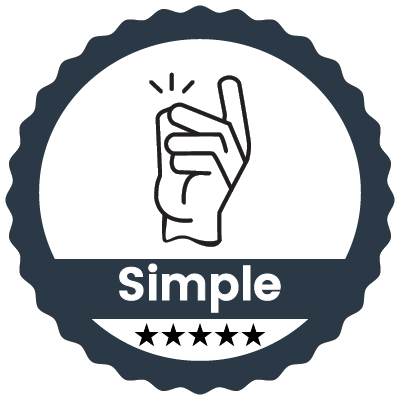The W-4 form, or Employee's Withholding Certificate, is a vital document that helps employers accurately withhold federal income tax from their employees' paychecks. Understanding the details of the W-4 form is crucial for employers to ensure compliance with tax regulations and ensure seamless paystub processing. This comprehensive guide aims to provide employers with a thorough understanding of the W-4 form and practical tips for assisting their workforce in navigating this essential document.
- What is a W-4 Form?
- Purpose and Importance:
- Key Updates and Changes:
- Navigating Allowances:
- Employee Responsibilities:
- Employer Responsibilities:
- Assisting Employees:
- Simplify your paystub process with SecurePayStubs!
What is a W-4 Form?
The W-4 form, known as the Employee's Withholding Certificate, is a standardized document mandated by the Internal Revenue Service (IRS) of the United States. Its primary purpose is to enable employees to communicate essential information to their employers regarding their federal income tax withholding preferences. By completing this form accurately, employees can ensure that the correct amount of federal income tax is withheld from their paychecks.
The form consists of several sections, each playing a crucial role in determining the amount of tax withheld:
- Personal Information: This section requires employees to provide basic personal details, including their full name, address, Social Security number (SSN), and other identifying information. This information helps employers accurately identify and record the employee within their company records.
- Filing Status: Employees must indicate their filing status on Form W-4. Filing status options typically include Single, Married Filing Jointly, Married Filing Separately, Head of Household, or Qualifying Widow(er) with Dependent Child. The chosen filing status affects the tax brackets and standard deduction available to the employee, consequently influencing the amount of tax withheld from their paycheck.
- Allowances: Historically, the W-4 form included a section for employees to claim allowances. These allowances were used to adjust the amount of tax withheld, with each allowance representing a portion of income that is not subject to taxation. However, recent revisions to the form have eliminated the concept of allowances, instead requiring employees to provide more detailed information about their filing status, dependents, and other factors that affect tax withholding.
- Multiple Jobs or Spouse Works: Clear instructions help employees adjust withholding to account for multiple jobs or a working spouse, ensuring precise tax deductions. Employees can indicate if they have multiple jobs or if their spouse works, allowing for accurate tax calculations to avoid under- or over-withholding.
- Additional Withholding and Exemption: In this section, employees can specify additional amounts they wish to withhold from each paycheck. This can cover additional tax liabilities or adjust for other income sources not subject to withholding. Employees who meet specific criteria may also be eligible for exemption from federal income tax withholding if they expect no tax liability for the current tax year and had none in the previous year.
- Signature: Completion of Form W-4 requires the employee's signature and date, affirming the accuracy of the provided information. This signature signifies the employee's acknowledgment and agreement with the withholding details provided on the form.
Each of these sections plays a crucial role in determining the employee's withholding status, ensuring that the correct amount of federal income tax is withheld from their paycheck. It is important for employees to complete Form W-4 accurately and promptly update it whenever their personal or financial circumstances change to avoid underpayment or overpayment of taxes.
Purpose and Importance:
The primary purpose of the W-4 form is to ensure that the correct amount of federal income tax is withheld from an employee's wages. By accurately completing the W-4 form, employees can prevent underpayment or overpayment of taxes throughout the year, thereby avoiding unexpected tax liabilities or refunds come tax season. For employers, adhering to W-4 guidelines is essential to fulfilling their tax withholding obligations and remaining compliant with IRS regulations.
Key Updates and Changes:
In 2020, the IRS introduced significant updates to the W-4 form, eliminating the previous system of allowances and introducing a more straightforward process for determining tax withholdings. Employers should familiarize themselves with these changes and ensure that both new and existing employees complete the revised W-4 form accurately.
Navigating Allowances:
Under the previous system, employees could claim allowances to adjust their tax withholdings. However, the updated W-4 form no longer utilizes allowances. Instead, employees provide specific information, such as filing status and additional income, to calculate their tax withholdings accurately. Employers should guide employees in completing the revised W-4 form to reflect their individual circumstances accurately.
Employee Responsibilities:
Employees are responsible for completing the W-4 form accurately and submitting it to their employers in a timely manner. Employers should educate their workforce about the importance of the W-4 form and provide assistance or resources, such as the IRS Tax Withholding Estimator, to help employees make informed decisions when completing the form.
Employer Responsibilities:
Employers play a crucial role in ensuring compliance with Form W-4 guidelines and maintaining accurate records. This involves several key responsibilities, including providing Form W-4 to new hires during the onboarding process. It is essential that employees complete the form accurately and promptly, with any necessary updates made due to life changes.
Once completed, employers are responsible for collecting and retaining Form W-4 for each employee, ensuring compliance with IRS regulations. Additionally, employers must update the provided information into paystub records and withhold the correct amount of federal income tax from employee paychecks based on the data provided on Form W-4.
By fulfilling these responsibilities, employers contribute to the smooth operation of the paystub process and facilitate accurate tax withholdings for their employees.
Assisting Employees:
Employers can support their employees in navigating the W-4 process by providing clear guidance and access to resources. This may include offering assistance with completing the form, providing educational materials or workshops on tax withholding, and encouraging employees to seek advice from tax professionals if needed.
Conclusion:
Understanding the W-4 form is essential for employers to maintain compliance with tax regulations and facilitate precise paystub processing. By staying informed about updates and changes to the W-4 form, employers can effectively assist their workforce in completing this vital document and promote financial stability for both employees and the organization as a whole.
Simplify your paystub process with SecurePayStubs!
Our paystub generator platform offers an option to give Form W-4 details, both pre-2020 and 2020 changes, making paystub detailing easy and precise. Here's how we can help:
Easy Information Entry: Quickly input employee details, give W-4 information pre- 2020 and 2020, for accurate paystub calculations.
Automatic Calculations: Enjoy the convenience of automatic calculations, ensuring precise deductions and earnings, considering both the old and new W-4 formats, without manual effort.
Comprehensive Pay Stubs: Generate detailed pay stubs that clearly show earnings, deductions, and more, in accordance with IRS guidelines, fostering compliance and transparency.
Compliance and Transparency: Ensure IRS compliance and give employees clear insights into their earnings, with options to include W-4 details reflecting both pre- and post-2020 changes.
Make paystub management effortless with SecurePayStubs. Start using our platform today to simplify your paystub process while accommodating W-4 changes seamlessly!
This article has been updated from its original publication date of May 29, 2024.



